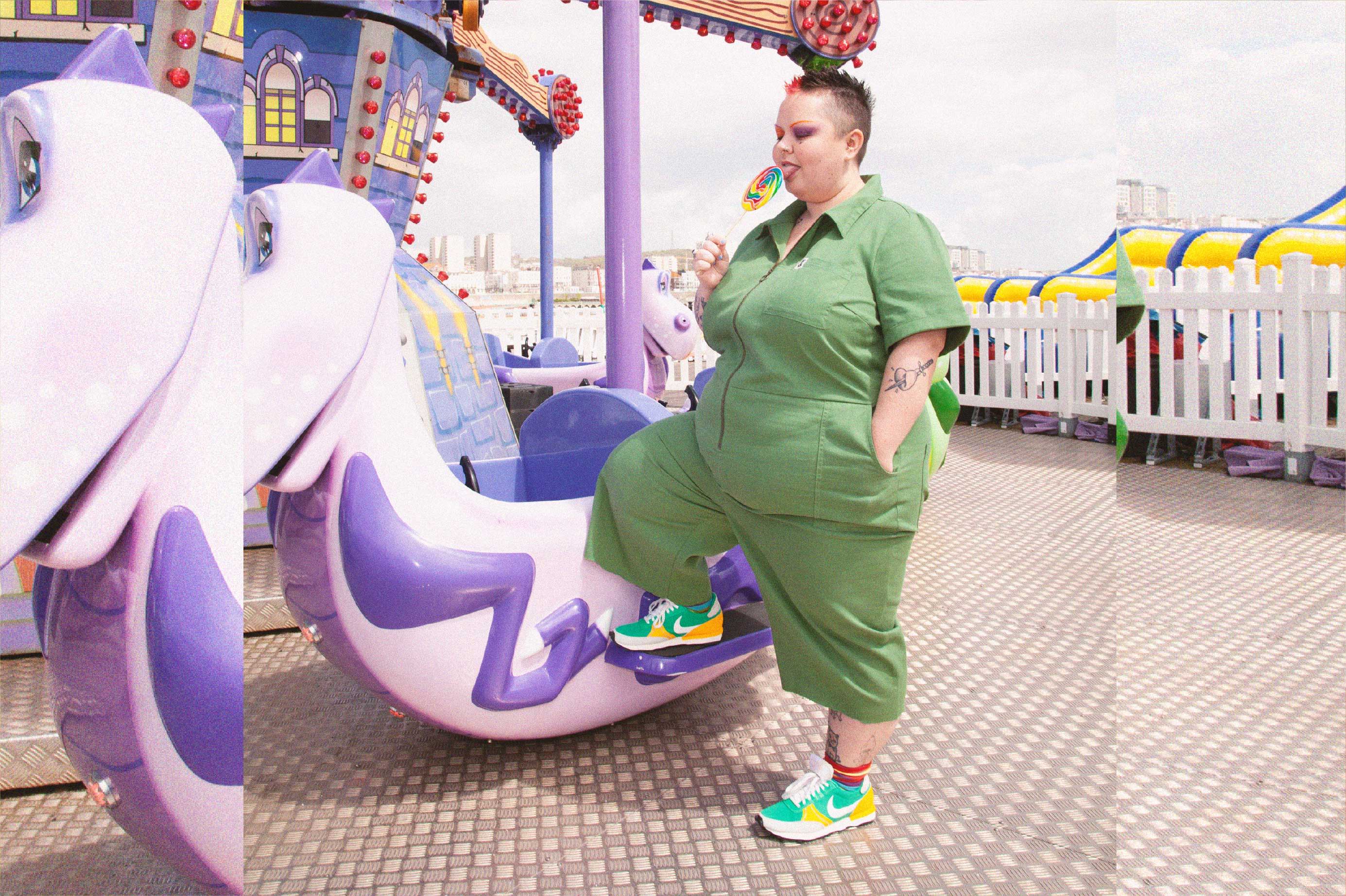A Brief History of Queer Fashion
By Sam Godley (They/Them)
Queer fashion is everywhere, that is a fact. From leather and handkerchiefs to socks and sandals, the queer experience is vast and couldn’t possibly be summed up in a single blog post. So instead, let’s take a very, very brief look at just a few elements of the joy that is queer fashion history.
Where better to start than with dungarees? It’s no secret that dungas are beloved among the queer community. Did you know that dungaree was initially used to refer to the thick cotton-twill cloth used for hardwearing work clothes? The word itself was first used in the 17th century and is thought to have originated from the small village of Dongri, near Mumbai. By the 19th century, the word ‘dungaree’ was used (in the plural) to describe the garment we know and love today! So where am I going with this?
Well, flash forward to the 70s and 80s. Although this blog post was intended to be about fashion, let’s think for a second about anti-fashion. The lesbian feminist movement sought to subvert the notions of fashion, femininity and prettiness. What better way to do that than by adorning their bodies with heavy, traditionally shapeless workwear, originally designed for men? Enter, the dungarees! Paired with a sturdy work boot, sourced from a local army surplus shop (looking at you Doc Martens), dungarees became synonymous with lesbianism. Of course, dungarees are worn by a huge variety of people today, regardless of their gender and sexuality but there’s something to be said for the gender-free, comfortable hug of a pair of dungas. In fact, Xtra magazine even declared them ‘the non-binary uniform’ in 2020.
Did you know that lavender, and shades of purple in general, have a long-standing link to the LGBTQIA+ community?
Sappho wrote of women adorned with wreaths of violets. During his time in Rome, Oscar Wilde described ‘purple hours one can snatch from that grey slowly-moving thing we call Time!’ and Sylvia Beach famously pinned a sprig of violets to her jacket lapel. Throughout history, queer people have used shades of purple as a symbol of their identities. Through times when it has been necessary to conceal one's identity, queerness has still existed and queer people have found ways to demonstrate their existence, in quiet protest of oppressive systems.
In an attempt to stigmatise and ostracise gay men of the 1950s, American senator Everett Dirksen coined the term ‘lavender lads’. This mid-20th century period of fearmongering and anti-LGBT+ rhetoric in the USA has since been referred to as ‘the lavender scare’. In 1970, Betty Friedan reportedly referred to lesbians as the ‘lavender menace’, when expressing disdain at the association between lesbianism and feminism.
Despite being used against them, queer people throughout history have found ways to reclaim these beautiful symbols. In response to Friedan’s attempt to discredit them, in true queer fashion, a group of lesbian feminists dubbed themselves the lavender menace and used this momentum to fuel their activism! To this day, the colour purple, in all its glorious hues, is still used as a celebration of queer identity (hello, Hamish Bowles at the 2019 Met Gala) and even for queer-coded fictional characters (looking at you, Ursula).
So, when you’re planning your Pride outfit this year, why not don a pair of lavender dungarees in celebration of our queer predecessors?


